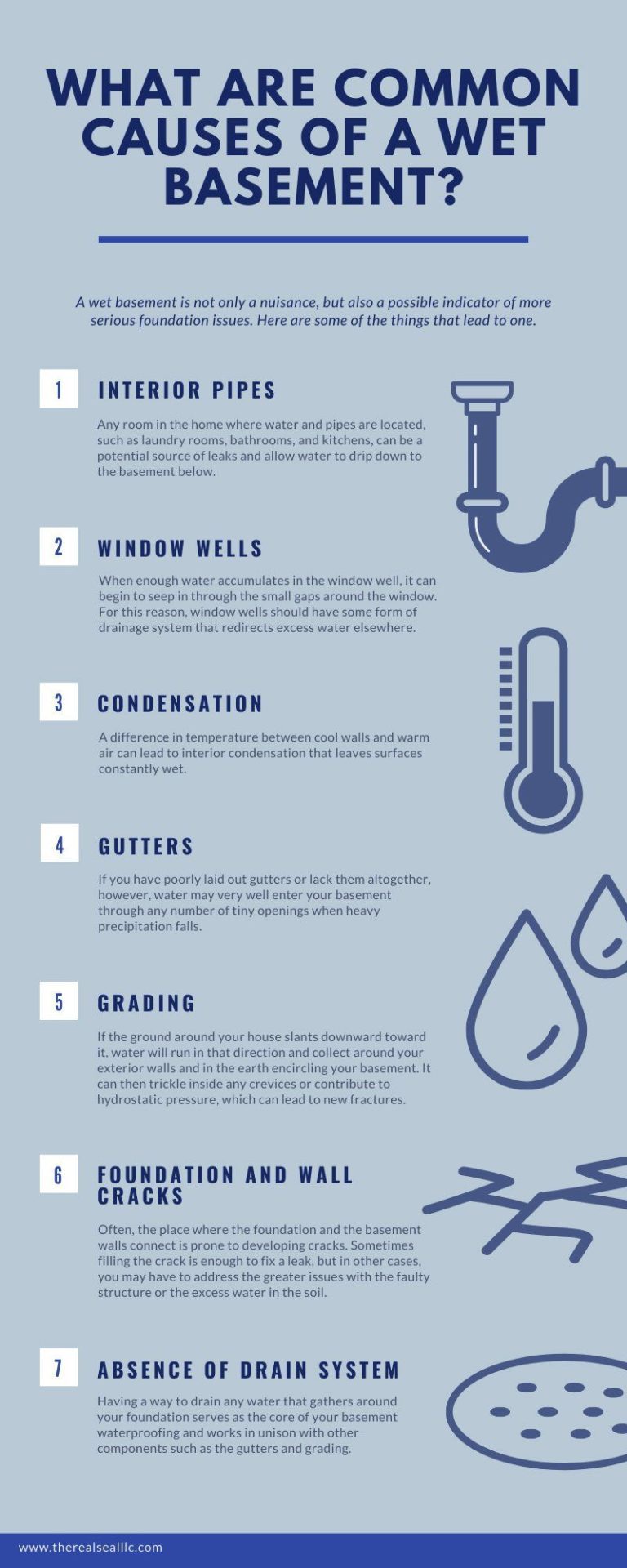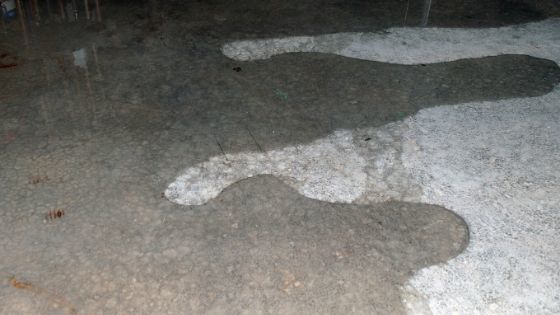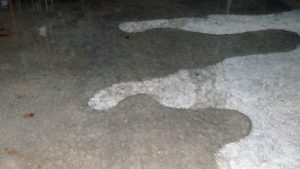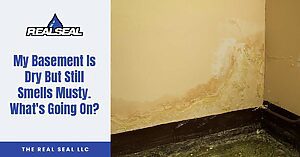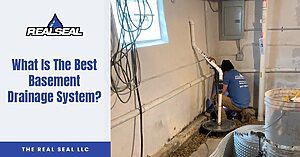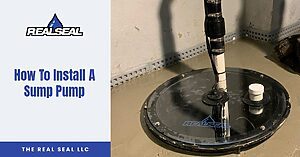No one wants a damp basement. The presence of water doesn’t just make the room unviable for everyday use; it can also allow the growth of unwanted organisms such as mold and weaken your home’s structure by exerting pressure on the foundation. Even if you try to put an end to it, wetness in your basement can result from a multitude of factors, so finding possible entry points in the form of leaks can be a difficult undertaking. At the same time, finding the source or sources of moisture is essential to finding a proper solution to the issue. So, what are common causes of a wet basement? Here are some of the major ones you should be aware of.
Interior Pipes
Any room in the home where water and pipes are located, such as laundry rooms, bathrooms, and kitchens, can be a potential source of leaks and allow water to drip down to the basement below. If your basement’s ceiling or walls are wet right underneath these locations in you home, the pipes may be allowing water to drip down. Finding the root of the problem will require you to inspect those areas above the basement and close or tighten the pipes to take care of the leak. Look at sinks, the washing machine, the dishwasher, bathtubs, and toilets. By solving any problems with these aspects of your home, you should be able to get rid of the resulting basement moisture.
Window Wells
Window wells allow light and air circulation by providing a space between basement windows and the surrounding earth. However, their basic design means that they’re inherently prone to collecting water, since they essentially maintain a hole in the ground around the window. When enough water accumulates in the window well, it can begin to seep in through the small gaps around the window. For this reason, window wells should have some form of drainage system that redirects excess water elsewhere. The drain could lead to either an exterior drain tile or an internal sump pump, depending on how you want the water to be removed.
Condensation
Basement moisture can also show up even if no water is coming in from outside. A difference in temperature between cool walls and warm air can lead to interior condensation that leaves surfaces constantly wet. Having a bathroom in the basement may play a part in this, as use of the shower can spread small water droplets and affect air temperature. A clothes dryer that lacks effective venting can also generate moisture as it combines warm air with wet clothes.
To avoid the formation of condensation, you can increase air circulation in your home with vents and fans that more evenly spread the moisture in the air. You can also install insulation in the basement walls so that their coldness doesn’t come in direct contact with the air and create condensation.
Gutters
Well-planned gutters move rain away from your home so that it doesn’t gather in the soil adjacent to your foundation. If you have poorly laid out gutters or lack them altogether, however, water may very well enter your basement through any number of tiny openings when heavy precipitation falls. By simply redirecting water several feet away from your home, you may alleviate much of the moisture your basement may be experiencing.
Grading
The term “grading” refers to the sloping of the ground around the home. When properly done, grading creates a decline that slants away from the house in all directions. Water that falls on the surface of the ground in the form of rain or snow can then run down the slopes where it can’t cause any damage to your home. Conversely, if the ground around your house slants downward toward it, water will run in that direction and collect around your exterior walls and in the earth encircling your basement. It can then trickle inside any crevices or contribute to hydrostatic pressure, which can lead to new fractures. In the same way that gutters work, proper grading is necessary to prevent water from invading your basement.
Foundation and Wall Cracks
Often, the place where the foundation and the basement walls connect is prone to developing cracks. This is especially likely if the floor joists that hold up the basement ceiling weren’t correctly attached to the foundation during construction. Shifts can occur over time as a result, and cracks may appear, allowing water into the basement. In some instances, the pressure of water in the ground surrounding the foundation, known as hydrostatic pressure, may create enough force to cause the foundation or basement walls to break at certain points. In both cases, expansion is a serious concern, as the gaps can become even larger over time if they’re left untreated. Sometimes filling the crack is enough to fix the leak, but in other cases, you may have to address the greater issues with the faulty structure or the excess water in the soil.
Absence of Drain System
Finally, the perpetuation of wet conditions in the basement may be due to the complete lack of a drainage system. Even with some of the precautions in place, keeping the basement completely dry may be challenging due to variations in outside weather, inside activity, and temperatures. Having a way to drain any water that gathers around your foundation serves as the core of your basement waterproofing and works in unison with other components such as the gutters and grading. You can set up a drain tile either inside your basement or outside your home; in both locations, the drain tile will collect and pump away water so that none of it ends up inside.
Equipped with this knowledge, you can better assess how to address any wetness in your basement. If you’re looking for basement waterproofing in the Chicago area, The Real Seal has unmatched expertise in getting to the root of the problem and carrying out the most appropriate fixes. Your basement won’t just be dry—it’ll remain dry for years to come. Contact us today!
